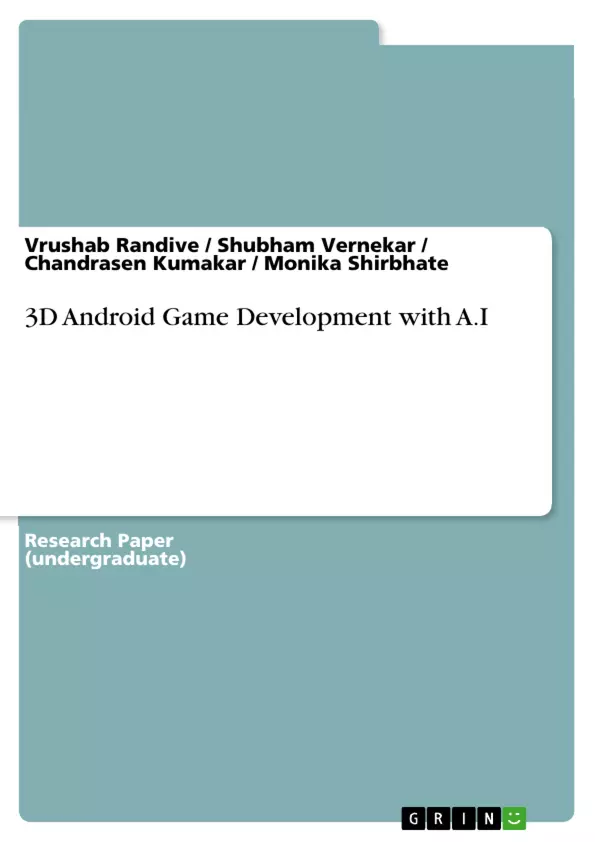This paper’s study is the development of the mobile phone game based on Android OS. In this paper, we present the design and implementation of an Android game we will develop, called Sammy. In this game the player will select between available tiles to create a path for Sammy to reach to his home from school. Sammy is developed for mobile devices with the Android mobile operating system. The tool used for developing this game is Unity 3D game engine. The game will also have an A.I. player which the player can play against. Nowadays mobile gaming market is growing rapidly and is expected to be a $16 billion business by 2016. Almost all Android devices will be able to successfully run the game. We hope that sharing our experiences will assist others who wish to either use our mobile game or develop their own. Our research seeks to adding values and enjoyment to users of the Android mobile devices.
Frequently Asked Questions: 3D Android Game Development with A.I
What is the main topic of this paper?
This paper focuses on the development of a 3D Android mobile phone game using the Unity 3D game engine, incorporating Artificial Intelligence (A.I.). The game, called "Sammy," involves creating a path for a character to reach home from school.
What technologies are used in this game development?
The key technologies used are:
- Unity 3D game engine
- Android mobile operating system
- MAYA and Adobe Photoshop (for model and background design)
What are the key features of the developed game?
The game includes the following features:
- Two operational modes: single player and Vs. A.I.
- Three tiers of difficulty: easy, intermediate, and hard
- Intuitive user interface
- Smooth animation system
- Bright, vibrant colors
What are the game modes available in "Sammy"?
The game features two main modes:
- Predefined levels (single player)
- Versus A.I.
How does the scoring system work in the game?
The score is based on:
- Time spent to complete the level
- Number of tiles used
- Collecting stars (bonus points)
What algorithms are used in the game's development?
Algorithms are used for two game modes (Predefined levels and VS. A.I) and for A.I behavior.
What is the mathematical model used in this research?
The game uses a mathematical model based on:
- Markov Decision Processes (MDPs)
- Concepts of reinforcement learning
- Petri nets for modelling object interactions
What is the target audience for the game?
The game is designed for casual gamers, emphasizing simplicity, ease of understanding, frequent rewards, and high re-playability.
What are some future possibilities for the game?
By adding new game play features and tiles as the level progresses. Also new challenges can be designed in new updates.
- Arbeit zitieren
- Vrushab Randive (Autor:in), Shubham Vernekar (Autor:in), Chandrasen Kumakar (Autor:in), Monika Shirbhate (Autor:in), 2015, 3D Android Game Development with A.I, München, GRIN Verlag, https://www.grin.com/document/294682



